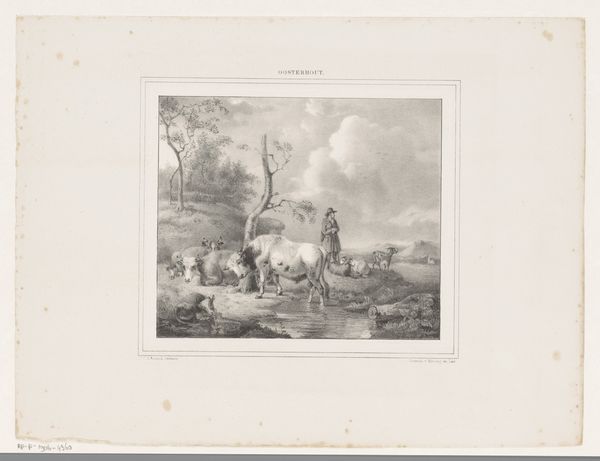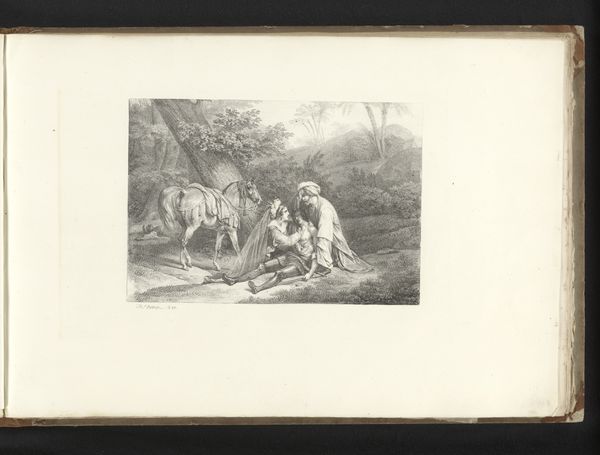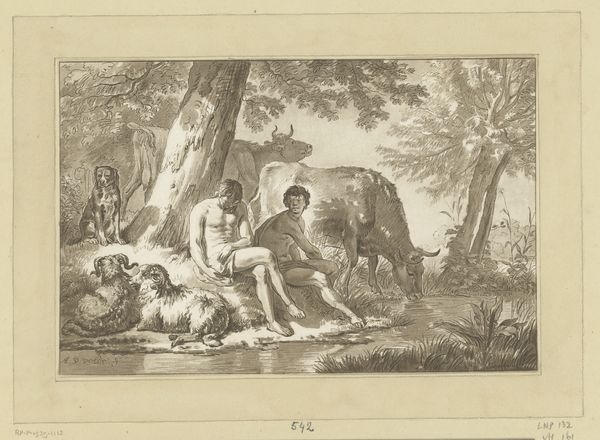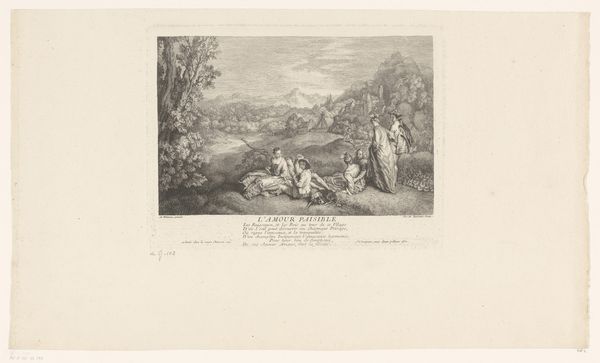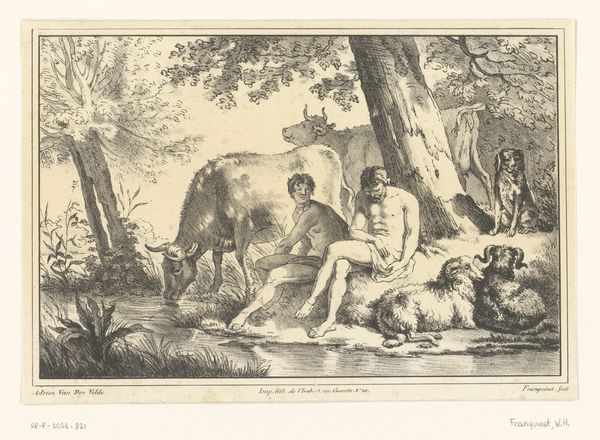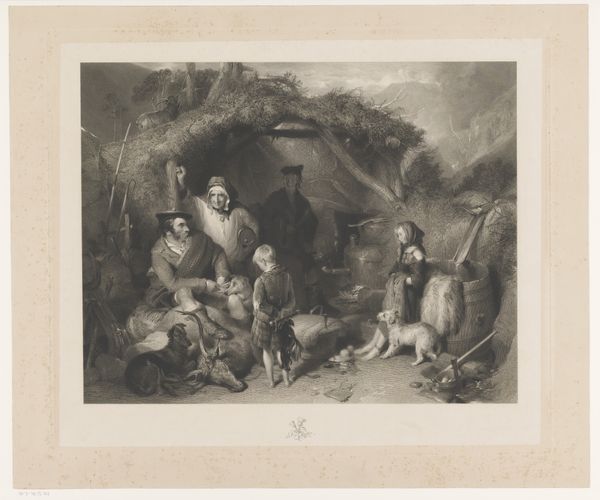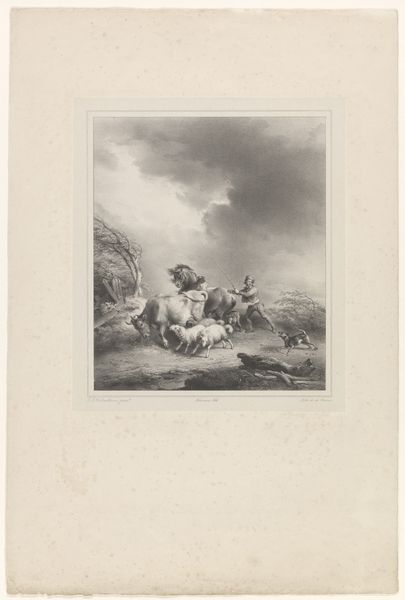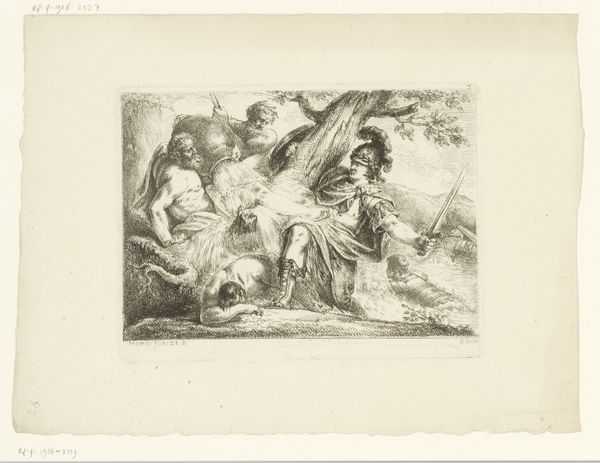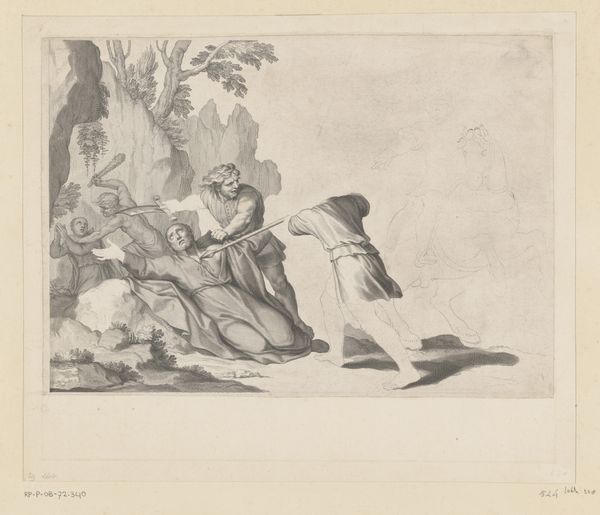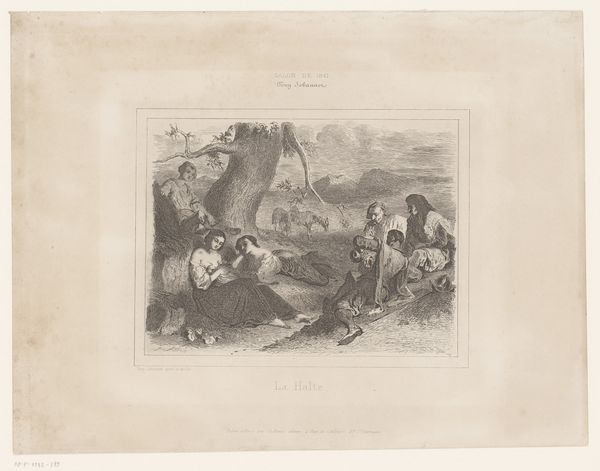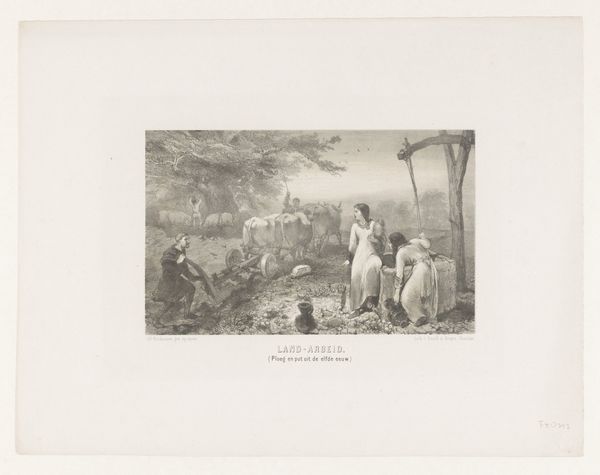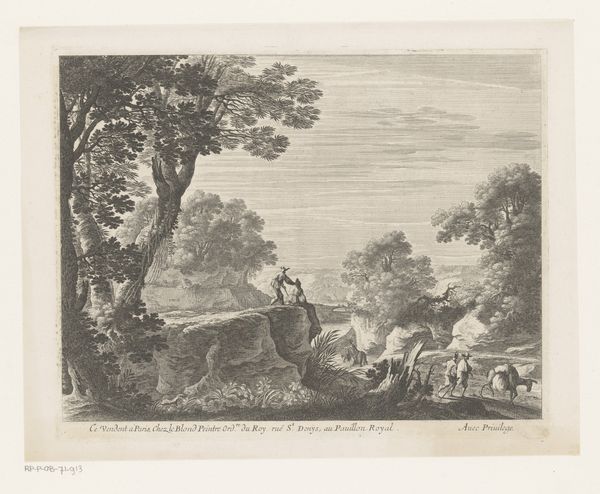
engraving
#
neoclacissism
#
narrative-art
#
old engraving style
#
figuration
#
line
#
history-painting
#
engraving
Dimensions: height 333 mm, width 417 mm
Copyright: Rijks Museum: Open Domain
Editor: So, here we have "Slavenveiling," an engraving made sometime between 1739 and 1797 by Pierre François Basan. The stark lines and the dramatic scene are really striking. What's your interpretation of a work like this, especially considering it’s on display here at the Rijksmuseum? Curator: Well, as a historian, I look at this piece within its socio-political context. The work touches upon the visual representation of the slave trade in the 18th century. Engravings like this weren't just art; they were often tools that shaped public opinion. Think about how the artist chose to portray the figures, their expressions, their positions. Editor: I notice the figure being sold is idealized, almost like a classical sculpture, while the merchants have… cruder features? Curator: Exactly. The artist is making a statement, intentionally or unintentionally. Is it romanticizing the subject, perhaps making the practice of slavery more palatable to a European audience by couching it in a classical aesthetic? Or is it a condemnation by contrasting the innocence of the enslaved person with the ugliness of the institution? Whose story is being amplified, and how does the museum today give them more agency through careful curation? Editor: It's uncomfortable to consider that a piece with such a disturbing subject could be perceived so differently depending on its original audience or artistic choices. It certainly adds a layer of complexity. Curator: Indeed. And that discomfort is important. The power of images, then and now, lies in their ability to shape our understanding of the world, and institutions like museums play a vital role in how these narratives are presented and critically examined. Editor: Thanks, that makes me think about the power museums wield in constructing these visual narratives and adding critical discourse, something I hadn’t thought about as deeply before.
Comments
No comments
Be the first to comment and join the conversation on the ultimate creative platform.
